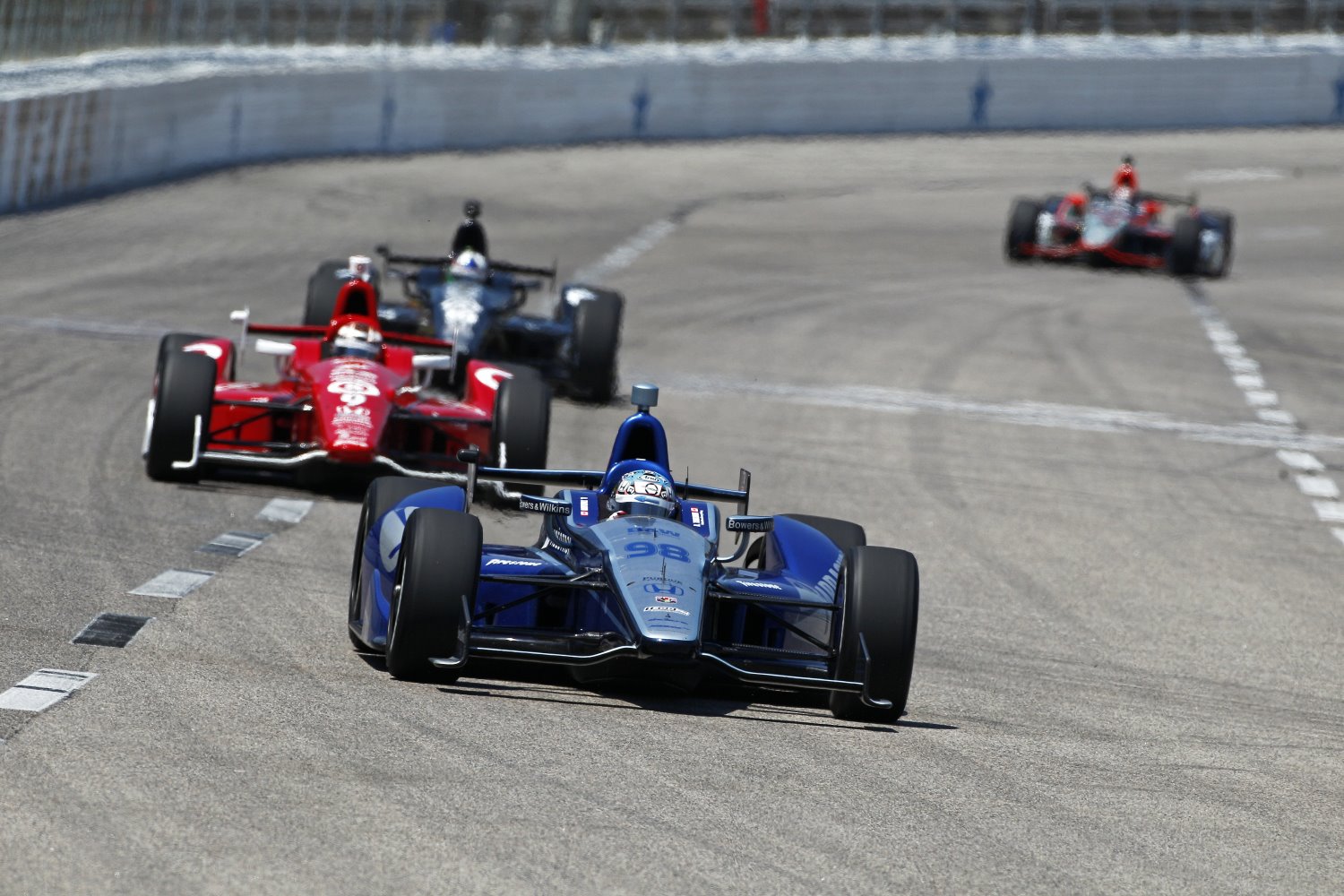Texas Offers a Glimpse of What IndyCar Was, Should Be
 |
| Tagliani leads Dixon |
“That's the best racing I've ever had on an oval." – Will Power
The Firestone 550 at Texas Motor Speedway should go down in history as the most important IndyCar race in the last 30 years.
For the first time since Parnelli Jones retired, we saw racecars sliding in the turns on an oval track.
We have a long way to go, but thankfully, someone at IndyCar is finally doing what I've been harping about for many years… taking the downforce out of the racecars and letting them slide all over the track. At long, long last, the idea of losing traction is gaining traction. It is being publicly accepted and recognized as the salvation of Indycar's oval tradition.
Those of you who just saw the light on this topic are a couple of decades late to the party; nevertheless, we're glad you're finally on board.
NBC's announcers – who have generally done a fine job this year – expressed continual surprise Saturday night when drivers had to correct a sliding car in the corners. That alone should demonstrate to us the real state of this sport.
C'mon, guys. We shouldn't be surprised when cars slide in the corners. That's what cars are supposed to do. We should be alarmed when they don't. I don't know why someone didn't figure this out many years ago. When IndyCar drivers can run a track flat out (insert emphatic yawn here), something is very wrong with the series.
When is the last time you saw an IndyCar team on an oval making desperate changes to a racecar in a search for speed? Dario Franchitti's car was handling so badly early in the Texas event that they unhooked the rear sway bar. That's a massive change. That's the kind of change commonly seen on stock cars at local short tracks between the heat race and the feature.
It is glorious to see teams actually working on the basic setup of the car, rather than fine tuning near-perfect spec cars that can be driven flat out all the way around the track.
For the first time in recent memory, you could hear the drivers lifting off the throttle in the corners. This was dangerously close to real, authentic oval racing the way it ought to be. And the way it used to be.
After being a relative non-issue for years, tire wear was a huge factor at Texas. Why? The reduction in downforce causes the cars to slide in the corners, which stresses and heats the tires with much greater friction. Smoother drivers make their tires last longer and grip better during long green flag segments.
Drivers with less skill or those who are overly aggressive use up their tires quicker. This is a good thing. This allows better, smarter drivers to get to the front instead of being stuck in a pack of mediocre drivers who can all drive flat out for the entire race.
Scott Dixon's car seemed to “go away" around lap 180, and shortly afterward he smacked the wall. I'm certainly not happy to see anyone crash, but the very fact that the cars are changing during the race is cause for celebration.
This means that drivers must find a line that suits their car instead of driving anywhere they please with a car that sticks like glue in any groove. It means that the cars will become temperamental and sensitive to changes in temperature and humidity, which means that the crew and driver must communicate to constantly maintain the car's balance and handling.
Listen, people… when the cars slide in the corners, the whole game changes.
When cars slide in the corners, even heavyweights like Scott Dixon make mistakes. When cars slide in the corners, they must be driven on the edge of control at every moment and drivers like Graham Rahal can crack under the pressure.
When cars slide in the corners, Ganassi and Penske can actually be beaten by Dale Coyne's miniscule operation by good driving, good strategy and a dash of luck.
For the first time in decades, the cars were sliding in a full drift through the turns at Texas Motor Speedway. Stop and consider what this means.
We're talking about a fundamental shift in everything that is IndyCar. We're talking about oval races that become more entertaining than the road and street events. We're talking about increased fan demand for more ovals on the schedule.
What happens then? There is a real future for open wheel oval drivers across the country – drivers who have no hope and no future anywhere except NASCAR right now.
A whole host of new racetracks open up to IndyCar – tracks that are currently considered too “dangerous" for Indycar's old, pack-racing spec cars. These tracks can turn a profit because fans will show up secure in the knowledge that they'll be watching real racing.
By the way… the Firestone 550 at Texas was about 15 mph slower than last year's race. Did anyone care? Or even notice?
We still have spec cars, limited engine options and too much regulation from the series. There’s still a long way to go before IndyCar is a finished product.
But last weekend you could feel the ghosts of Billy Vukovich, Mauri Rose and Wilbur Shaw finally stirring from their long slumber.
The Firestone 550 was everything that oval racing should be, once was, and can be again.
